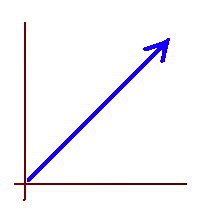The order of operations messes with our reading habits.
The mathematical order of operations seems to be a source of confusion for some students, sometimes even frustration. For example, when presented with the expression
3 + 4(x-1)
some students ask: “Why can’t we just start by adding 3 + 4, and then multiplying 7 times (x-1)?”
My short answer is: “Because math is not English.” Then I ask: “Is there any parenthesis around the 3 + 4 sum?” When they say “no” I continue: “Then the parenthesis that is there right after the 4 claims that 4 for itself, for multiplication purposes. It will not let the 4 run away with the 3, oh no sir, no way! The multiplication operation has title to that 4, and to that (x-1) as well, and it does not care about the 3 the slightest bit. The addition operation holds a lesser priority than multiplication does, so it has to wait for its turn.”
I explain the PEMDAS rules using action verbs commonly applied to human situations, thus making the math symbols play the role of active, independent characters with human-like behaviors. This type of explanation makes my students understand the mathematical structure of the expression at hand but still some seem puzzled, or surprised, or even bothered by the fact that the applicable sequence of operation does not necessarily follow the simple left-to-right order. So in those cases I proceed with the following explanation:
There is a crucial difference between the way we read math, and the way we read English. This is very important. We always read English from left to right. Such a simple, linear, unidirectional way does not do it for math. It does not work. Reading math from left to right only, is insufficient, and inadequate. In math we have to read formulas and expressions not just from left to right but from right to left; from the top down; from the bottom up; from the inside out; from the outside in; and even around in circles. In short, every which way, else we run the risk of missing essential information about the structure of the thing. Reading math is not reading. Reading math is much more similar to what the eyes of a helicopter pilot do when they are flying over a mountain terrain, looking for a spot to safely land the helicopter. You look at everything, everywhere.
Written language mimics spoken language, going along with the flow of the story. English is perfect for telling stories. Math describes structures. It has an altogether different goal, so it cannot work the same way English does. Mathematical expressions do not resemble stories nearly enough the way they resemble gizmos, appliances, devices, or cars, objects made out of parts. The parts are connected to each other in a very specific way. Each part has its own function, and its own place within the whole thing. So, really, reading math from left to right only, makes as much sense as trying to “read a car” from left to right only.
Golden iteration
-
The expression converges to the golden ratio φ. Another way to say this is
that the sequence defined by x0 = 1 and for n > 0 converges to φ. This post
wi...
1 day ago





1 comment:
I like how you talk about describing the math symbols as characters to help explain ideas to your students. Being able to really visualize the concept behind mathematical problems is what creates those "Eureka!" moments of clarity where it all clicks.
If you get a chance to stop by my blog, I am hosting a special giveaway just for Tutors, and I'd like to invite you to come check it out:
http://contest-corner.blogspot.com/2009/03/review-giveaway-tutormatchcom-premium.html
-Beeb :)
Post a Comment